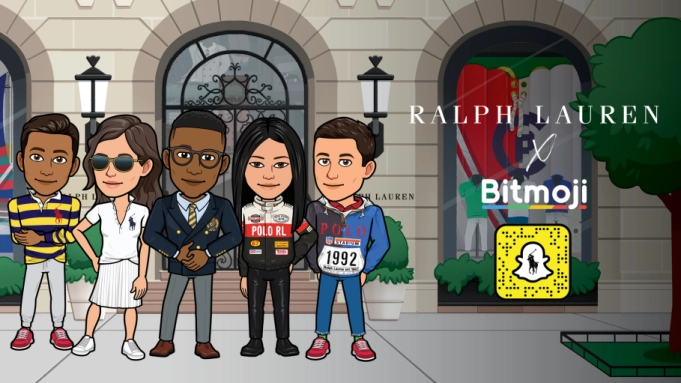You know that day is not far when you’ll be marketing for individuals who don’t exist in real life. That’s true. As virtual avatars gain more popularity day-by-day and the concept of metaverse starts becoming more prominent, brands will have to think about the profiles of digital avatars of consumers and not just real consumers. Basically, you’ll have to figure out how to get people to spend their Robux currency on Roblox, V-bucks on Fortnite, and the likes.
So, how did we go from Direct-To-Consumer (D2C) to Direct-To-Avatar (D2A) Commerce? Aren’t we still selling to the consumer? How do avatars make a difference? Let’s find out.
The basic difference between the both is, the ease with which you can reach the consumer. In D2C, even though you are selling to consumers directly, you have to overcome the logistic/shipping challenges as well as ensure it is better than your competitors. D2A helps you to reach virtual identities directly. Here, the supply chain involves digitizing products with 3D designs tools, visualization, and reaching the consumer’s digital wardrobe.
Now, you might be wondering – but avatars? Really? Who spends on them and why? While we have covered this topic extensively in our latest blog, the primary reason is, people find avatars as the extension of their real selves. And they take them seriously. If you don’t believe us, these numbers speak for themselves. In 2019, League of Legends earned around $1.5 billion from selling skins and Fortnite earned around $1 billion. It is expected that the demand for skins will keep increasing and this number will reach around $50 billion by 2022.
So why should fashion brands start thinking about D2A?
1) Know Your Consumers Better:

The choices they make for their avatars reveal their personalities in much detail as compared to the information you get from their normal shopping behaviour. Physical fashion doesn’t provide endless possibilities for their fantasies to come true. Marketers can use the data from the avatar profiles and fine tune their marketing efforts. The more people engage with your brand, the more you know about them. Avatars provide the perfect opportunity for continuous, interactive brand engagement.
2) Make The Best Of Both The Worlds:

‘The Proteus Effect’ introduced by Nick Yee and Jeremy Bailenson in their 2007 study focused on the impact avatars had on their real life creators. Marketers can attract their loyal digital users in the virtual world to make purchases in the real world and vice versa.
For example, a campaign could be run only targeted towards a particular avatar segment. Or you could offer real life discounts for consumers whose virtual avatars have interacted with your brand the most. Like the merchants on Second Life who exchange the local Linden dollars for real money on various Internet exchanges.
Basically, give them strong reasons to interact with you in both the worlds.
Even if you do not create a campaign, if the avatars could try on your digital clothes and show to their fellow avatars and receive compliments, there’s a chance that they would consider buying them in the real world.
3) The Perfect Testing Ground:

Virtual worlds are the perfect marketplaces to gauge the response for your upcoming collection launch. You can launch a limited edition collection for virtual avatars, get feedback, and make changes as required when you take the collection live. You can take inspiration from these brands who launched outfits for digital avatars.
Snapchat in partnership with Ralph Lauren made apparel available for the users’ Bitmoji avatars. This year, even American Eagle announced a virtual clothing collection for Bitmoji avatars. In 2021, Ralph Lauren launched a digital collection of 50 outfits on Zepeto. In January 2021, a collection was launched for Pokemon Go avatars by Gucci and The North Face.
What makes D2A exciting for consumers?
- Increasing Value For Virtual Goods:
Unlike D2C, the waiting period to get any product in hand is less in D2A. The virtual environments provide enough options to make in-game purchases with respect to clothing, furniture, other accessories, etc. Immediate gratification for the win!
Kerry Murphy, founder and CEO of The Fabricant says, “The future of consumerism lies in virtual products. People are going to start seeing value in digital items and realize that they’d rather interact with a digital item, or have an infinite wardrobe of digital fashion items but a very limited wardrobe of physical items.”
Travis Scott, an American rapper, is estimated to have earned around $2 million in the week he collaborated with Fortnite and launched game skins.
2) Stand Out In The Avatar Community:

Virtual worlds are not just about gaming today. They also give a chance for avatars to interact with each other, learn together, and do everything they would in a physical setting. So obviously consumers want their avatars to look anything, but boring.
In virtual worlds like Second Life, Entropia Universe, There, the Sims Online, and Habbo Hotel, users can not only customise their avatars but also the virtual spaces they are in. Since the time these platforms have allowed people to explore the worlds for free, the membership numbers have spiked. Currently 65,000 people have subscribed to Second Life membership and 100,000 members enjoy fewer in-game privileges for free.
According to Vogue Business, instead of playing games, 50% of Fortnite’s users are interested in creating their virtual worlds in the Fortnite Creative Mode. This is also validated by Linden Lab, the company which developed Second Life. They claim, over 3,000 people earn actual money from virtual businesses and the average is a whopping $20,000 a year.
3) Unique Shopping Experience:

Their avatars not only get a chance to be associated with reputed brands, but also to enjoy a brand-customised immersive experience.
For example, R/GA London is creating a direct-to-avatar virtual store for the clothing brand Vollebak within Decentraland, a Metaverse platform. They are launching Vollebak’s Mars jacket by creating an experience that feels like the planet Mars so that consumers truly understand what they are purchasing. This is how D2A can redefine customer experiences.
Steve Tidball, chief executive of Vollebak said, “Working with an innovation partner like R/GA London has enabled us to start unlocking the potential of direct-to-avatar commerce by launching our first clothing built for Mars in a virtual store that defies the laws of physics.”
Key Takeaways:
- D2A is an excellent opportunity for marketers to know their consumers better.
- D2A helps brands to integrate the virtual worlds into their real world campaigns.
- Fashion brands can leverage the virtual worlds by launching limited edition collections for avatars only.
- In the contactless economy, consumers have started realising the value of virtual goods.
- Consumers are not only interested in customising their avatars, but also the virtual spaces they are present in.
- D2A helps consumers to experience a unique, immersive, and interesting shopping experience.
While there is nothing to lose by experimenting, brands need to keep in mind that they cannot intrude the avatars’ digital lives. They need to be more than a digital billboard. They need to be easily blended with the essence of the virtual environment they are marketing in.
We at Neo Marche would love to help you kickstart your journey of virtual clothing and pave your entry to virtual marketplaces and more.


